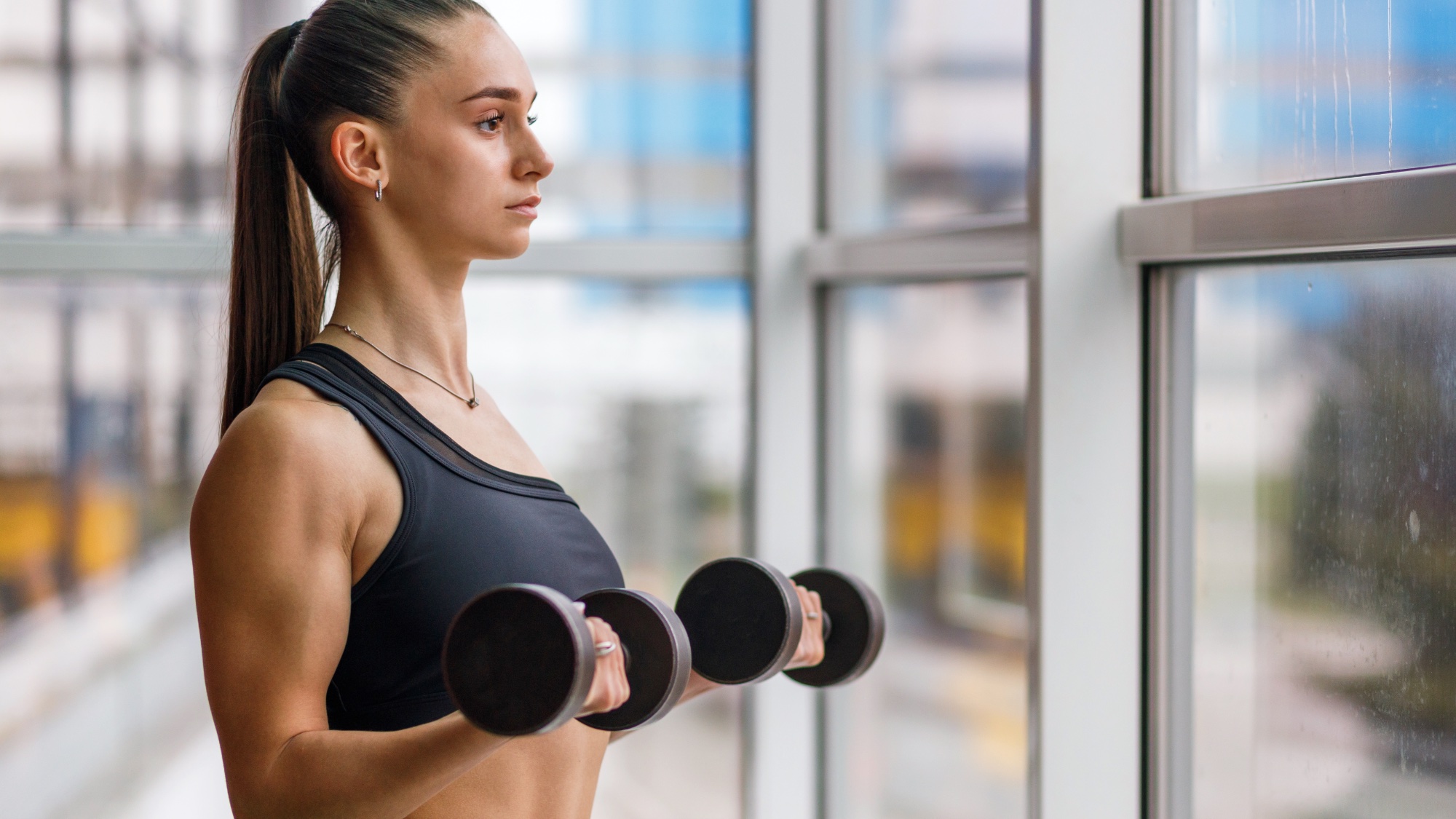Forget the gym — this 4-move dumbbell routine strengthens your upper body and core at the same time
Here's the lowdown on this simple routine

Abs are arguably one of the easiest muscle groups to talk yourself out of doing. I've lost count of the many times I’ve told myself I’ll finish off a weights session with one of the best ab workouts, and it just doesn’t end up happening.
Enter fitness trainer, Becky Greenan’s simple dumbbell routine that works both your abdominal and upper body muscles. By targeting your core, shoulders, biceps, triceps and back muscles, Greenan's routine offers a range of benefits.
You’ll develop a strong core for improved posture and stability, sculpted shoulders for enhanced upper body strength, and defined biceps and triceps enhancing both functionality and aesthetics. Training your back muscles in this dumbbell workout will also support good posture and help reduce the risk of back pain.
This sounds like a pretty good answer to building a healthier and stronger version of yourself, right? Well, yes, but as with any workout, it’s important to note that no single workout can do it all. To get lasting results and create a well-rounded fitness regimen, you should aim to incorporate Greenan’s workout into a more comprehensive plan that includes exercises for other muscle groups and a variety of forms of movement such as cardio and yoga.
But, if you're looking for a fresh upper body sweat that you can jump into right away then you’re in the correct place.
A post shared by Becky Greenan (@built.by.becky)
A photo posted by on
What is the workout?
We’d recommend getting your hands on some of the best adjustable dumbbells if you're thinking of completing this routine at home as this modifiable weight offers a fuss-free way to move up or down weight where necessary.
Don't start off with too heavy a weight. You will need to perform each move for eight to 12 reps on each arm (16-20 reps for alternating exercises) and complete three to four sets of the full routine.
The four exercises which are detailed below provide a balanced combination of push and pull movements to target various upper body muscle groups, while also engaging the core for stability and support.
Seated bicep curl
As you probably guessed from the name, dumbbell curls target the biceps. To perform one, you will want to grip a dumbbell in each hand as you sit on the floor. Keep your elbows close to your sides and slowly curl the weights upward toward your shoulders, contracting your biceps. When you reach the top of the move, you can then lower the weights back to your shoulder height ready for the next repetition.
Sign up to get the BEST of Tom's Guide direct to your inbox.
Get instant access to breaking news, the hottest reviews, great deals and helpful tips.
Seated alternating shoulder press
Focusing on the shoulders, particularly the deltoids, you will start by holding two dumbbells in either hand at shoulder height. Next, you will alternate pressing one dumbbell overhead while keeping the other at shoulder height. As with any weighted exercise, don’t start too heavy and risk not being able to finish a set or worse, putting yourself at risk of injury.
Kneeling alternating tricep kickbacks
Time to feel things in your triceps. Start in a kneeling position with a dumbbell in each hand. Extend one arm at a time straight back, fully straightening your elbow while keeping the upper arm stationary. When you return one arm back, move onto the other side and alternate through the reps.
Bird dog rows
This exercise engages the back, especially the lats and upper back, as well as the core for stability. You will want to begin on all fours with a dumbbell in one hand. Extend the opposite arm and leg, creating a straight line with your body. With your arm holding the weight, perform a row by pulling the weight toward your hip while engaging your back muscles.
What are the benefits?
Combining upper body and core exercises in the same routine allows you to work multiple muscle groups in a shorter amount of time. This efficiency is great for those with busy schedules looking to maximize the effectiveness of the time they allocate to exercise. Additionally, engaging both upper body and core muscles in a single workout can increase the overall intensity, leading to a higher caloric burn.
Sitting on the floor for the first two exercises is a great way to ensure your core is engaged due to the reduced stability provided by the floor as compared to sitting on a bench or a chair. When you sit on the floor your body has to work harder to maintain balance, which activates the core muscles. This additional engagement of the core is particularly noticeable when performing exercises that involve lifting weights, as it forces your core to hold your body steady throughout the movement.
More from Tom's Guide

Jessica has been a fitness writer at Tom’s Guide since 2023, bringing three years of experience writing about health, fitness, and the great outdoors. Her passion for exercise began during her childhood, where she spent weekends hiking and competing in local athletics club events. After earning a master’s degree in journalism from Cardiff University, Jessica found the perfect way to combine her love of storytelling and fitness into a career.
Jessica is passionate about testing fitness gear and tech, using her reviews to help readers make informed buying decisions. She ran her first marathon in April 2024, finishing it in 3 hours and 48 minutes. Through her training, she’s developed a deep understanding of what it takes to grow as a runner, from effective workouts and recovery techniques to selecting the right gear for every challenge.
When she’s not at her desk, Jessica enjoys spending time in the kitchen crafting new recipes, braving cold water swims and hiking.
-
tally-ho Thank you for this guidance. I'm having difficulty following it. Line drawings help but of course words are cheaper. My challenge is a need for further description of start position, body movement, muscle state, and type of contraction. As a layperson, I cannot confirm that my interpretations are correct. A technical or content edit pass would help. Cheers.Reply
